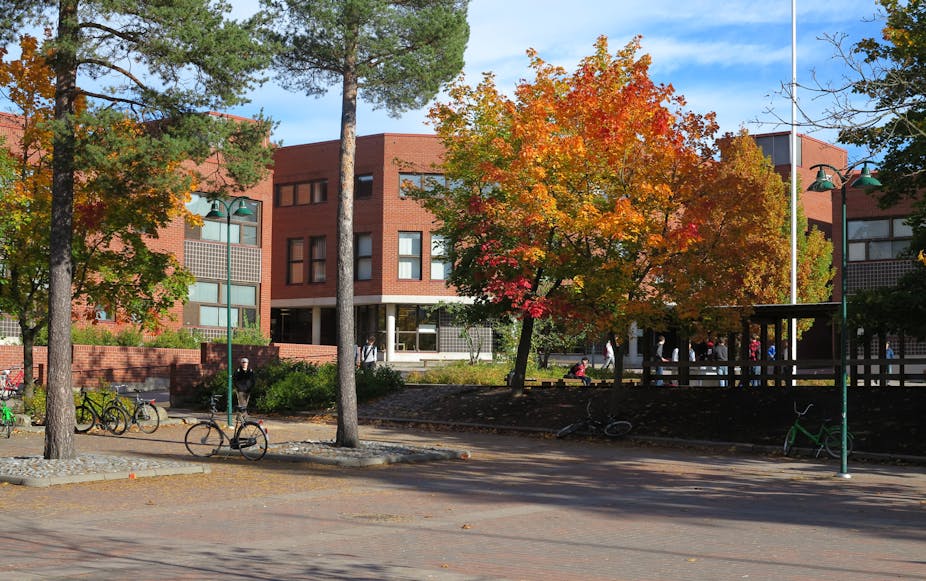When looking at large-scale international studies and comparisons of education systems worldwide, everyone’s always talking about Finland. Finland seems to set the benchmark for education worldwide. Foreign educational experts, delegations of teachers and educational politicians flock to the departments of teacher education in Finnish universities, as well as schools. So what is it about education in Finland that’s so good, and why do they constantly top the league tables?
Finnish kids spend less time in schools than children in many other countries. Compared to other OECD countries, Finland does not invest an especially large portion of its budget in education. Adding up the money, teaching time and good results, the system is highly effective.
The Finns have often been characterised as a nation whose belief in the power of education is strong. Education has had, and still has, an important status in this small wooded country of about 5.4 million people.
One of the basic principles is to create equal opportunities in education for all inhabitants. Education is seen as a basic right of every Finn. Education is free of charge at all stages, although in upper secondary schools the students have to buy textbooks themselves.
The backbone of the Finnish educational system is basic education, which can also be called “comprehensive school”. This is compulsory for all children from the ages of seven to 16 (grades 1–9). There have been political debates about extending compulsory education to age of 17, but this was not considered possible in the present economic situation.

In Finland, the school administration is decentralised and there are no school inspectors. In fact, parents trust the teachers and schools, so there is no need to execute external administrative control just for control’s sake.
Most of the Finnish pupils choose the nearest school to their home. That is possible and recommended, because the variation between schools is very small and the quality of teaching does not vary significantly.
The Finnish comprehensive school is fairly uniform and its main goal is to ensure equal opportunities for the entire age group. The percentage of dropouts in compulsory education is very small. Large-scale international studies of educational achievement, such as PISA and the International Association for the Evaluation of Educational Achievement, have repeatedly shown that the differences between Finnish comprehensive schools are small.
Post-comprehensive education is optional, but the majority of adolescents continue their studies after the compulsory school. They can choose between two main types of education, upper secondary school and vocational education. About half of the age cohort choose the upper secondary school after compulsory education, another half the vocational path.
The majority of schools in Finland are under municipal administration, which is subsidised by the state, but they still have a fair amount of autonomy in administration. The number of private schools is quite small. There is no system of school inspections and centralised control for school textbooks was abolished in 1992.
Schools follow the broad curriculum provided by the Finnish National Board of Education. Thus, the teachers have a fairly large degree of freedom in their profession and are considered trusted professionals in their field.
Teachers and teacher education courses have traditionally had a high status in Finnish society. Teacher education was transferred to universities in the 1970s and all qualified teachers hold a Master’s degree, except kindergarten teachers who hold a Bachelor’s degree. Finnish teacher education, which is carried out in close connection with specific teacher training schools, provides quality teaching as a profession.
It has not been difficult to attract students to teacher education programs. Students are selected for teacher education with the help of two entrance tests. The class teacher course is one of the most popular university programs alongside medicine and law, and only about 5% of all applicants are admitted.
The most important thing about the Finnish way of education is that politicians, researchers, teachers and parents have whistled the same educational tune for about 40 years now: equity and equality for all in education.

